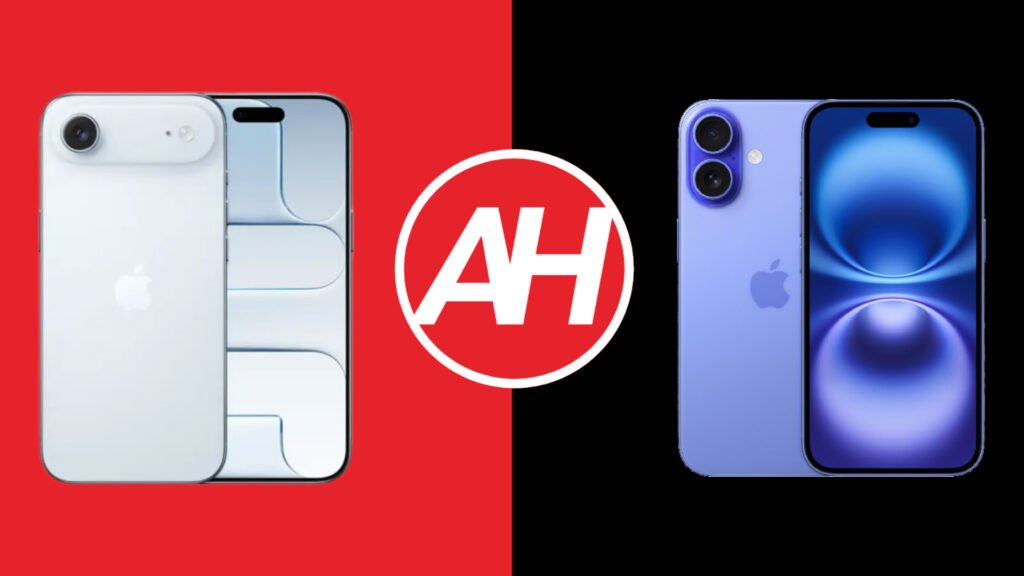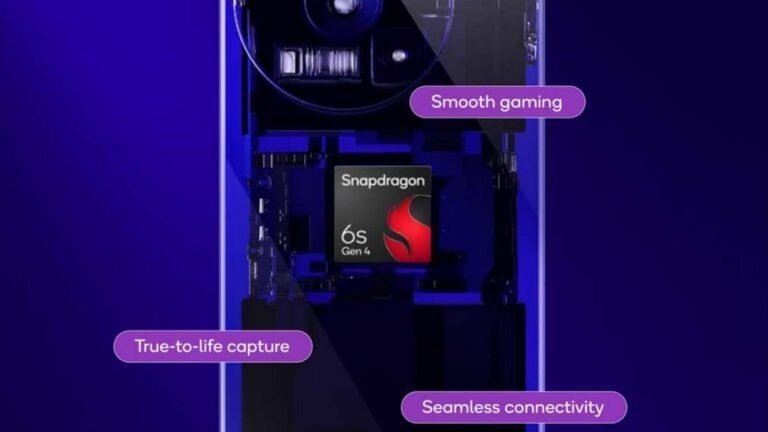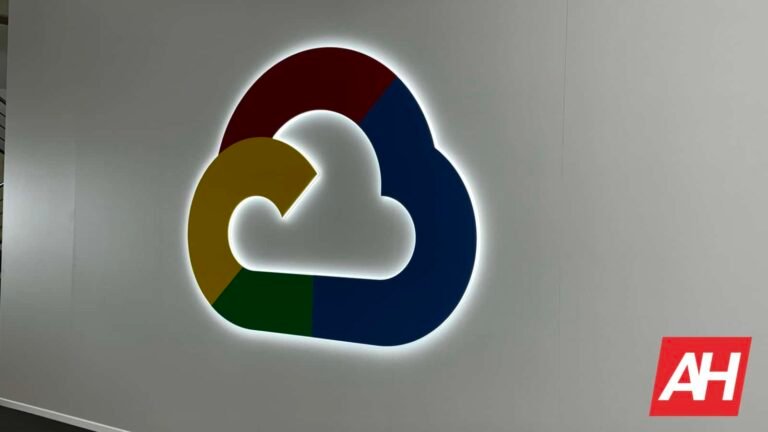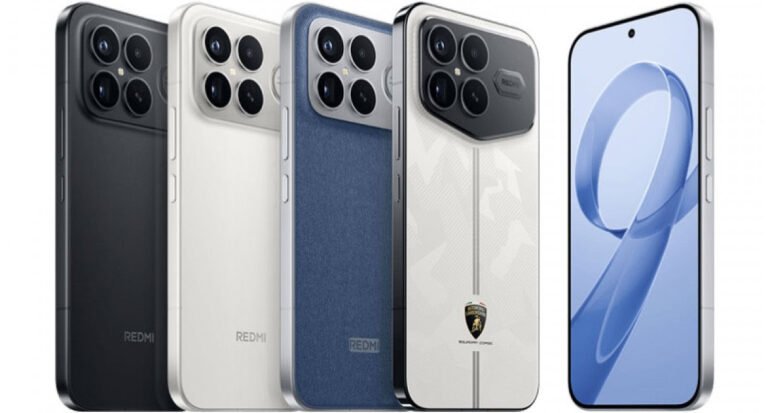

The Apple iPhone 16 was a solid buy for many people. Even though it arrived last year, some of you are probably looking to upgrade already. Or… perhaps you’re looking to get this phone for the first time. Well, if you’re considering to upgrade to Apple’s new ultra-thin phone, or are trying to decide between the two, we’re here to help. In this article, we’ll compare the Apple iPhone Air vs Apple iPhone 16.
These two phones do have similarities, of course, but they’re also quite different in many ways. The iPhone Air is different than any current iPhone, by the sheer fact it has only one rear camera and a different, ultra-thin design. With that being said, we’ll first list the specifications of both smartphones, and will then proceed to compare them across a number of different categories.
Specs

Apple iPhone Air

Apple iPhone 16
| Apple iPhone Air | Apple iPhone 16 | |
|---|---|---|
| Dimensions | 156.2 x 74.7 x 5.6 mm | 147.6 x 71.6 x 7.8 mm |
| Weight | 165 grams | 170 grams |
| Display | 6.5-inch LTPO Super Retina XDR OLED | 6.1-inch Super Retina XDR OLED |
| Refresh rate | 1-120Hz | 60Hz |
| Resolution | 2736 x 1260 | 2556 x 1179 |
| Chipset | Apple A19 Pro | Apple A18 |
| RAM | 12GB | 8GB |
| Storage | 256GB/512GB/1TB | 128GB/256GB/512GB |
| Main camera | 48MP (f/1.6 aperture, 1/1.56-inch sensor size, sensor-shift-OIS) | 48MP (f/1.6 aperture, 1/1.56-inch sensor size, 1.0um pixel size, sensor-shift OIS, PDAF) |
| Ultra-wide camera | N/A | 12MP (f/2.2 aperture, 120-degree FoV, 0.7um pixel size, dual pixel PDAF) |
| Telephoto camera | N/A | N/A |
| Periscope telephoto camera | N/A | N/A |
| Selfie camera | 18MP (f/1.9 aperture, OIS) | 12MP (f/1.9 aperture, 1/3.6-inch sensor size, 1.0um pixel size, PDAF) |
| Battery size | 3,149mAh | 3,561mAh |
| Charging | Wired, 20W MagSafe wireless, 4.5W reverse wired (charger not included) | 30W wired, 25W MagSafe wireless, 15W Qi2 wireless, 4.5W reverse wired (charger not included) |
| Colors | Space Black, Cloud White, Light Gold, Sky Blue | Black, White, Pink, Teal, Ultramarine |
Apple iPhone Air vs Apple iPhone 16: Design
The Apple iPhone Air is made out of titanium and glass, while the Apple iPhone 16 utilizes aluminum and glass. From the front, the two phones look very similar, even though the iPhone 16 is smaller. They both have flat displays and a centered pill-shaped cutout at the top. That cutout is called the Dynamic Island. Both of them also have very thin, uniform bezels around their displays. The bezels are thinner on the iPhone Air, though.
Things do differ as soon as we look to their sides, or backs. While both phones have predominantly flat frames, the iPhone Air’s curves more towards the edges, and it’s also noticeably thinner. On the right side, you’ll find the power/lock and Camera control keys on both smartphones. On the left, the volume up and down buttons are included, along with the Action key.
If we flip them around, you’ll notice more differences. The backplates are mostly flat, but the camera setups are different. The iPhone Air includes a camera bar on the back, which contains a single camera. The iPhone 16, on the other hand, has a separate camera island in the top-left corner, with two cameras placed vertically. Both of those setups protrude on the back, but the iPhone Air’s protrudes a bit more.
The iPhone Air is taller, wider, and thinner than the iPhone 16. It is a bit lighter, by 5 grams, than the iPhone 16, and that is to be expected considering the smaller battery. Both smartphones do come with an IP68 certification for water and dust resistance.
Apple iPhone Air vs Apple iPhone 16: Display
The Apple iPhone Air has a larger display than the iPhone 16. It includes a 6.5-inch LTPO Super Retina XDR OLED display. That panel is flat, and it has a 120Hz refresh rate, adaptive refresh rate. HDR10 and Dolby Vision are supported here, while the peak brightness you can get is 3,000 nits. The screen-to-body ratio is at around 90%, while the display aspect ratio is 19.5:9. The resolution here is 2736 x 1260 pixels. This display is protected by the Ceramic Shield 2, and it comes with an anti-reflective coating.

The iPhone 16, on the other hand, has a 6.1-inch Super Retina XDR OLED display. That panel is also flat, and it doesn’t have a high refresh rate, it’s stuck at 60Hz. Dolby Vision is supported, while the peak brightness this display can offer is 2,000 nits. The screen-to-body ratio is at around 87%, while the display aspect ratio is 19.5:9. The resolution here is 2556 x 1179 pixels, while the Ceramic Shield glass (2024 gen) protects the display.
Both of these displays are really good, actually. They’re both vivid, have good viewing angles, and they’re plenty sharp as well. The touch response is good, too, and both offer good display protection. The thing is, the iPhone Air’s display does get visibly brighter, while its anti-reflective coating does make a difference. It doesn’t make as much difference as the Gorilla Armor or Gorilla Armor 2, but it does make a difference. The higher refresh rate of the iPhone Air is also noticeable.
Apple iPhone Air vs Apple iPhone 16: Performance
The Apple A19 Pro SoC fuels the iPhone Air. That is Apple’s latest and greatest SoC, though this particular model comes with 5 GPU cores, not 6. The one with 6 GPU cores is reserved for ‘Pro’ iPhones. With that being said, this chip is paired with 12GB of RAM and NVMe storage in the iPhone Air.
The Apple iPhone 16, on the other hand, is fueled by the Apple A18 processor, Apple’s chip from last year. This is also a 3nm chip, and it’s still very powerful. It also comes with a 5-core GPU, by the way. In the iPhone 16, this processor is paired with 8GB of RAM and NVMe storage. Do note that neither of the two phones offers expandable storage.
You’ll be glad to know that both of these phones do offer really good performance. Day-to-day tasks are not a problem for either device, as both offer very smooth performance, no matter what you’re doing. They’re also very capable in the gaming department, though the iPhone Air does get a bit warmer than we’d like at times. Still, overheating was not an issue at all, and both performed really well in that regard, too.
Apple iPhone Air vs Apple iPhone 16: Battery
There is a 3,149mAh battery included inside the iPhone Air. Yes, that is a rather tiny battery, but that’s what was expected considering how thin this phone is. No, Apple is not using a silicone carbon battery here, the company is not using that tech at all, not yet. The iPhone 16, on the other hand, includes a 3,561mAh battery. That is notably more juice, and you do have to keep in mind that the phone not only has a smaller display but a lower refresh rate, too.
While the iPhone Air offered more battery juice than we expected from such a tiny battery, it’s no match for the iPhone 16. In fact, the battery life is not even close on the two phones. The iPhone 16 is able to provide 1-2 hours more of screen-on time during the day, at least from what we’ve seen. Your mileage may vary, of course, as each of us has different usage preferences and thus battery life experiences. You’ll get more juice from the iPhone 16, though, for sure.
What about charging? Well, the iPhone Air supports 20W wired (it’s more like 18W in reality, though), 20W MagSafe wireless, and 4.5W reverse wired charging. The iPhone 16, on the other hand, supports 30W wired, 25W MagSafe wireless, and 4.5W reverse wired charging. It takes the iPhone Air about an hour and a half to fully charge, while the iPhone 16 needs around 10 minutes more than that. Neither smartphone ships with a charger in the box, by the way.
Apple iPhone Air vs Apple iPhone 16: Cameras
The Apple iPhone Air ships with a single camera on the back. The phone includes a 48-megapixel camera (1/1.56-inch sensor size) there, and an 18-megapixel snapper on the front. The iPhone 16, on the other hand, has two cameras on the back. It includes a 48-megapixel main camera (1/1.56-inch sensor size), and a 12-megapixel ultrawide camera (120-degree FoV). There is also a 12-megapixel selfie camera (1/3.6-inch sensor size).

Yes, the two smartphones do have the same main camera on the back. The end results are a bit different, however. The iPhone Air does seem to do a slightly better job, as it has better color rendering. Still, for the most part, you’re getting very similar images. The video recording is really good on both of them. That ultrawide camera on the back of the iPhone 16 is not bad, but it’s not on the same level as the main camera, not even close.
When it comes to selfie shooters, the iPhone Air wins, hands down. It’s not that the iPhone 16’s selfie camera is bad, but the one used on the iPhone Air is simply better. That camera also includes a square camera sensor, so it’s way more versatile. You can essentially shoot in landscape while holding the phone upright, which is a neat and useful trick. The phone can even widen the FoV automatically when more people are in the shot.
Audio
When it comes to audio, the iPhone 16 is in the lead. It has two speakers, wihch are actually quite good in both terms of loudness and quality. The iPhone Air is stuck with a single speaker, which is not only quiter but it’s also tinnier in comparison.
Neither smartphone includes an audio jack, which is what we’ve come to expect these days. Yes, you can use their Type-C ports for the same purpose, if you’d like to connect your wired headphones. Alternatively, the iPhone Air supports Bluetooth 6.0, while the iPhone 16 has Bluetooth 5.3 support.
The post Phone Comparisons: Apple iPhone Air vs Apple iPhone 16 appeared first on Android Headlines.


